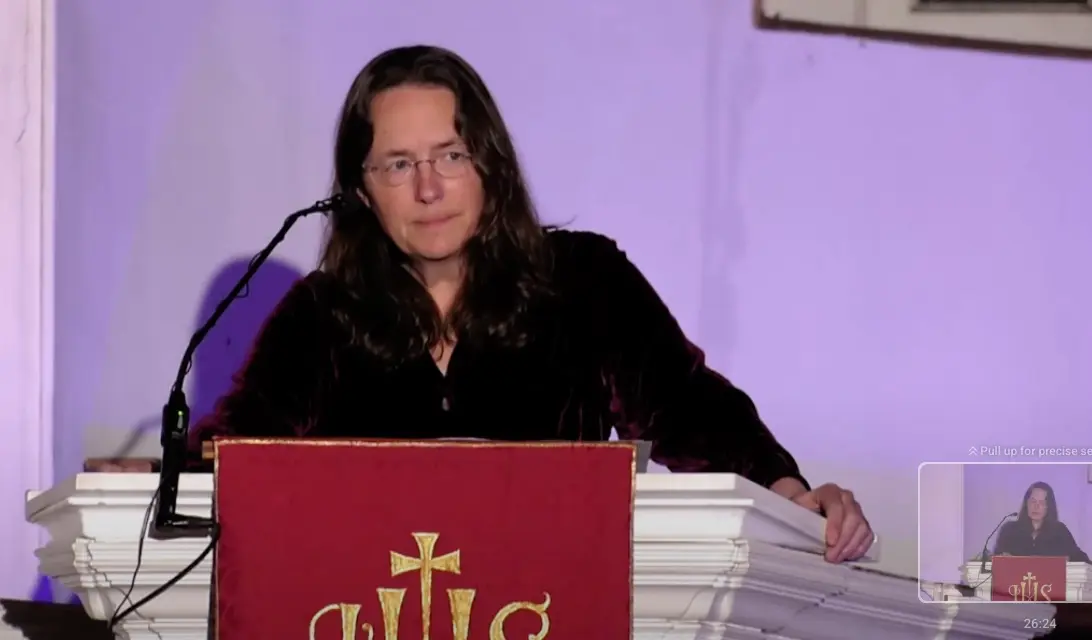One of my favorite historians, Professor Richardson is a kind of north star to train your eyes on in making sense of this peculiarly unsettling moment in time. While any Heather Cox Richardson speech is worth your time, this one at Boston’s Old North Church — in commemoration of the anniversary of the lighting of the lanterns there in 1775 — deserves special mention for its sweeping yet intimate detail view of revolutionary sentiment in the colonies under waning British rule.
Professor Richardson has a true gift for both making centuries’-old history seem strikingly relevant today, as well as for analyzing today’s news through the lens of the long-term, clarifying its causes, and tempering it with context. A question we thought settled long ago — whether we are to be ruled by an all-powerful king whose power is unchecked by any force — has disturbingly resurfaced as Donald Trump convincingly play-acts (or perhaps naturally embodies) the role of mad king. Here she weaves the tale of revolutionaries in the late 18th century throwing off the mad king of their time, as an inspiration to those of us inexplicably confronting this same problem again in 2025.
Heather Cox Richardson speech summary
I would encourage everybody to watch or read the speech in full (as well as check out HCR’s other brilliant books) as it’s well worth your time — but for those short on the irreplaceable stuff, here’s a summary:
In 1775, tensions in Boston reached a breaking point after years of British occupation and taxation without representation. The city was divided between Patriots, Loyalists, and those trying to remain neutral as British soldiers controlled movement in and out of the town. The resistance movement known as the Sons of Liberty, which included silversmith Paul Revere, organized against British policies through boycotts, communication networks, and strategic planning. On April 18, 1775, when British troops prepared to march to arrest colonial leaders and seize weapons stockpiled in Concord, Revere arranged for signal lanterns to be hung in the Old North Church steeple to warn neighboring towns, while he and others rode through the countryside spreading the alarm.
The following morning, the first shots of the Revolutionary War were fired on Lexington Green, followed by a larger battle at Concord and a deadly British retreat back to Boston as thousands of militiamen converged on the route. The conflict that began over whether a king could be checked by the people would ultimately lead to American independence and the radical concept that people have the right to govern themselves. The ordinary individuals who hung the lanterns and spread the warning—Robert Newman, John Pulling, and riders like Revere, William Dawes, and Samuel Prescott—did not set out to change history but simply stood by their principles in a moment of crisis, demonstrating how seemingly small acts of resistance can spark profound change even when the participants don’t realize the historical significance of their actions.

Comments are closed.